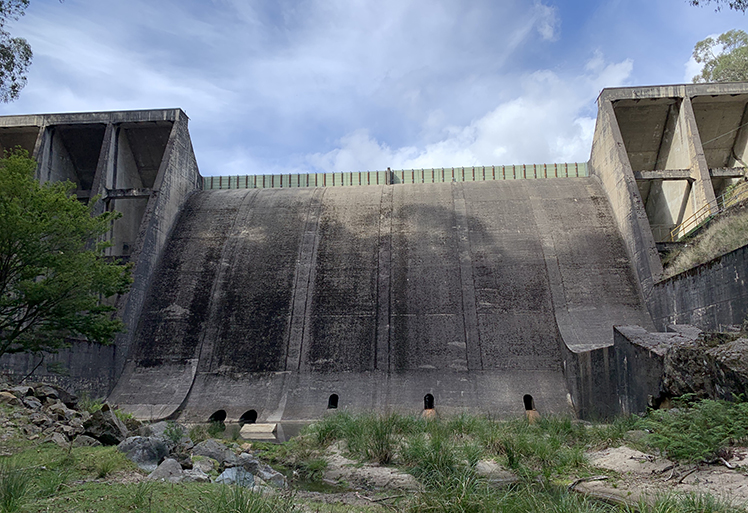Recently, my thinking and making has been focused on ambient expressions and the vibrations of bodies. Specifically, the timbres of bodies, and the way that together the distinct timbres of vibrating bodies inflect and transform each other, producing a collective environmental tone; an ambience.
The entanglement of human and non-human desire is immediate here. The desire to extract, to grow, to express, to intensify, to perform, the desire to surrender to excess.
I arrived with the intention of opening to the complex interrelations and timbral qualities that are produced in this area, which is known for its moths and hydroelectricity — to feed these attunements into the speculative cartographic imaginary of bodily timbre. When referring to bodies I mean waters, instruments, stars, objects, societies, apparatuses, cultures, any-body susceptible to vibration.
Lake Guy’s presence met me soft in the chest – a tacit anchor, harnessing. The lake acts as frame that, in collaboration with the river boulders and AGL Hydro signage, contours the multiplicity of surrounding ambience(s). Each day walking and listening around the circumference of Lake Guy, I begin to feel as though this body of water bifurcates the groomed “village side” of Bogong from the rhythms and textures of the “bush side” — of course, this is far from true.
Here, everywhere, there is water.
The snow from the Bogong High Plains turns to ice and the ice turns to water, tracing the Rocky Valley and Pretty Valley branches of the East Kiewa River, to the place where the body of Lake Guy rests, and releases. Lake Guy wasn’t always a lake. In 1911 European bodies arrived at Bogong, with the view to establish a hydro-electric scheme. These bodies carried with them ideas of power, a power that could be translated into the future, into your home.
The Kiewa Hydroelectric Scheme is made up of four main events that are interrelated by virtue of gravity and human intervention. These four bodies perform daily rhythms that are determined by an oscillation, the gestures between harness and release. The water is harnessed at McKay Creek Power Station and then released into Bogong Power Station, then through a steel-lined high-pressure outfall, Bogong Power Station releases to Clover Power Station – the outfall at Bogong Power Station is a sight, the intensity and velocity with which the water is released is exhilarating – then from Clover to the West Kiewa Power Station, which provides 140MW of ultra-fast power to meet Melbourne’s peak demands.
However, there is an interruption to these loops of power, so the AGL Control Room Officer tells me. The enormous hard-rock tunnel that connects Bogong power station to Clover station is damaged and “has been for about two years”. This means that the energy harnessed in the body of Lake Guy isn’t siphoned and used in the way it was hydraulically intended. Though the water in Lake Guy’s body is still released into the next power station, so in a multicausal way this energy still finds its way to the fridges and microwaves of Melbourne. Through encountering the entanglements of these hydro-events I’m reminded of Elizabeth Grosz’s proposition that ‘art comes from excess, in the world, in objects, in living things, that enables them to be more than they are, to give more than themselves, their material properties and qualities, their possible uses, than self-evident’.
Junction Dam is special. It is a human-built structure that embodies the ambient collisions and inter/intra-species patterning(s) of the area. Internal of the dam wall, through the centre, forms a narrow and elongated passage, which is wrapped in a twenty-five-foot wave of frozen concrete (the dam wall). Outside of the wave grows a quilting of moss and gravity-defying Drop Tail Lizards.
Inside the dam wall I’ve been exercising an iterative recording/playback methodology, a fundamental part of my practice-based research (based on Lucierian processes). A sample of the outcomes of these sonic investigations, Junction Re-Sonant, can be listened to, as part of a compilation of responses to the area, which I’ve been composing during my residency here.
The source recording used in Junction Re-Sonant is an electromagnetic recording produced inside the Junction Dam wall. The electromagnetic fields were made audible by LOM’S Elektrouši, a pair of passive electromagnetic sensors. This recording was then played and recorded several times inside the dam wall – each iteration rerecords the EM recording, the surrounding environment, and the resonant responses of the space. Junction Re-Sonant is the final slices (cycles 32, 33, 34 and 40) from a 45-minute exercise. Towards the end of the piece a faint siren can be heard. The siren sounds in the early evenings here, when the outfall (i.e., the high-pressure dinosaur spa) is discharging water – meaning the plug at the bottom of Lake Guy is a little bit ajar, meaning many humans bodies now have their heaters on, laptops open, they’re bathing, making dinner, etc.
Articulating the inside of the dam walls and feeling, hearing, seeing the walkway cages (that delineate the passage) reverberating was an incredible sensation — more on this in the next entry.
